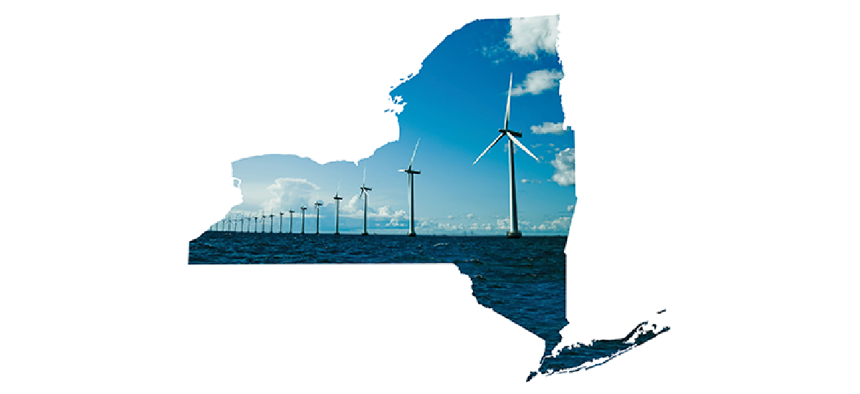Sponsored Content.
New York is known to do big things and do them right – this is evidenced yet again with Governor Cuomo’s ambitious and forward thinking offshore wind energy goal of 2,400 MW by 2030. But to reach that goal, proper infrastructure development is required to pave the way for success.
Just as we’ve seen with airports, bridges, tunnels and roads, New York has the opportunity to build smart, well-planned offshore wind infrastructure that will optimize resources and build a better New York for everyone. Offshore wind infrastructure should not be viewed any differently if New York is to pioneer the way to a clean energy future while spurring economic growth. Now is New York’s time to lead by building a brand- new U.S. offshore wind industry with good paying jobs to become a true energy hub.
New York can accomplish these goals through the New York OceanGrid, and be the first state to do so, by building smart infrastructure to lay the groundwork for an offshore wind industry to thrive and create the competition needed to lower costs.
Well-planned transmission infrastructure will stimulate competition that will lower costs and is critical for the long-term health of the offshore wind industry. New York has limited onshore interconnection points – making it absolutely critical that each point is optimized throughout all phases of development if there is to be a chance for future expansion. Without room for expansion, New York will not achieve its ambitious clean energy goals.
Proven Infrastructure
Offshore wind transmission, the cables that bring wind power to the grid, might not be what everyone first imagines when thinking about offshore wind energy. However, as the European experience demonstrates, it is crucial to the success of the industry. Experience abroad has shown that open access transmission will lower the costs of offshore wind energy. Anbaric’s New York OceanGrid is capable of connecting the 2,400 MW of offshore wind energy proposed by Governor Cuomo to the on-shore grid through offshore collector platforms and cables buried underwater and underground.
Lower Costs
Because open access shared transmission allows two or three wind farms to connect offshore to a single transmission line, this approach will result in lower costs for all phases of offshore wind development. The long-term benefits include the low prices that European countries have obtained for offshore wind by separating construction and ownership of transmission and generation, which intensifies competition among generators. That approach has yielded prices at parity with conventional onshore generation in The Netherlands and Germany, as evidenced by several zero subsidy bids in recent offshore auctions. New York could reach its offshore wind goals at the lowest possible cost if it adopted a comparable approach.
Economic Development Opportunity
Anbaric’s New York OceanGrid provides proven transmission infrastructure to deliver offshore wind energy at the lowest possible cost while creating the supply chain necessary to build a new offshore wind industry in New York. As referenced by the October 2017 study from NYSERDA, and as is the case in Europe, the jobs that will come with a new offshore wind industry are significant.
New York can’t afford to waste any time, space, or money and must get this right from the start. This means prioritizing transmission to create the competition necessary to reach economies of scale, at a pace needed to build an industry and lower costs. New York doesn’t take no for an answer – anyone who says this can’t be done is misguided in thinking so. We’ve heard it said before “If you build it they will come,” but only if planned and built properly.
Click here for more information on Kevin Knobloch.
NEXT STORY: Talking tourism with Carlo Scissura


